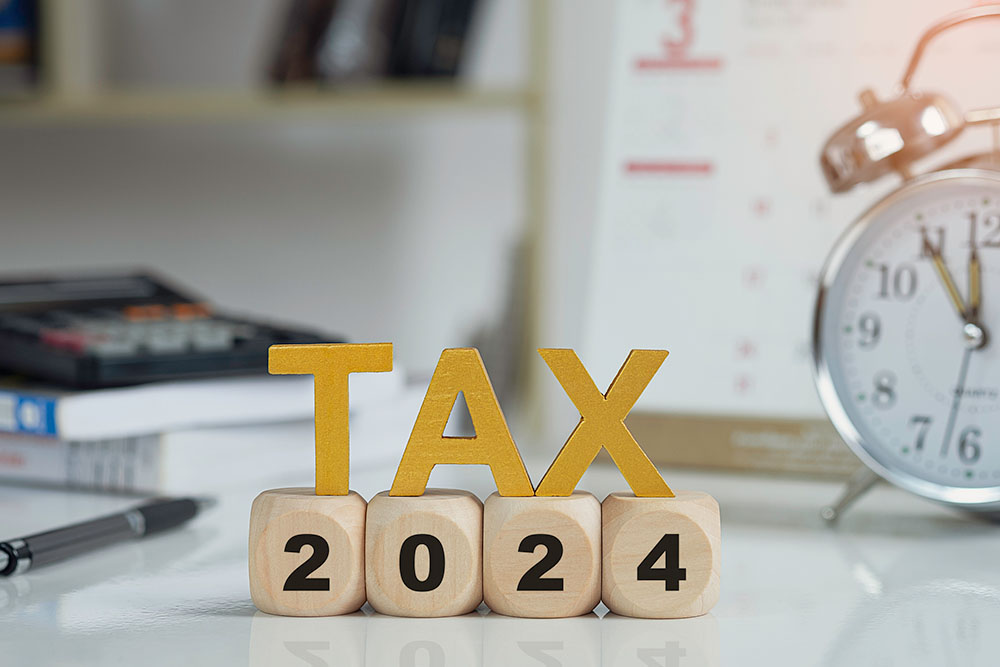Bure Valley Group is an investment introducer platform which links successful investors with exciting, innovative UK startups seeking funding. This content is for information purposes only and should not be taken as financial or investment advice.
Studies have found that the UK, in 2023, faces its highest tax burden in 70 years. About a third of national income is taken in tax. This may be difficult to comprehend given the current pressure on public services like the NHS (where over 7m people are on a waiting list for routine hospital treatment). Investors are also facing a squeeze as various tax-free allowances shrink, such as those for dividends and capital gains.
Given the fiscal landscape, having a strong tax plan is more important than ever to help investors keep more of their earnings and returns. In this guide, we offer some ideas to assist readers in maximising their allowances for the 2023-24 tax year
We hope these insights are useful to you. To learn more about our EIS projects and other early-stage opportunities, visit our portfolio page here. For enquiries regarding our latest projects and funding, you can reach us via:
+44 160 334 0827
Personal Savings Allowance
Each tax year, a UK investor (as a basic rate taxpayer) can earn up to £1,000 from interest, without tax, outside of an ISA. For those on the higher rate, the tax-free threshold is £500. This is called the Personal Savings Allowance (PSA).
In 2023, higher interest rates on cash savings have been a welcome development (although higher mortgage costs, due to the rising UK base rate, have likely wiped out many of the benefits for homeowners). One less-known byproduct of rising savings rates, however, is that they have dragged many people inadvertently over their tax-free PSA.
In 2021, it was possible to hold over £86,000 in cash outside of an ISA without facing tax on interest. Today in 2023, however, higher interest rates could mean that savers start crossing over their tax-free threshold at £14,000 or less.
Investors should be wary of holding too much in cash regardless of this development due to its low potential for long-term wealth growth. However, investors may wish to re-examine their cash holdings in 2023-24 and make sure they will not pay needless tax on their savings and other interest-generating assets (e.g. coupons from bond funds).
Capital gains and dividends
In 2022-23, an investor could earn up to £12,300 from capital gains and £2,000 from dividends outside an ISA without facing a tax bill. In the current 2023-24 tax year, however, the tax-free allowances for these two income sources have been reduced.
As of April 2023, an individual can earn up to £6,000 from capital gains and £1,000 from dividends without tax. In 2024, moreover, the tax-free allowances will fall even further to £3,000 and £500, respectively.
This trend will almost certainly make it harder for many investors to shield their hard-earned returns from tax. Yet there are still options available. Maximising your ISA can be a good option (up to £20,000 can be committed each tax year). Another idea is to consider tax-efficient investment options such as the Enterprise Investment Scheme (EIS).
In 2023-24, an investor can generate tax-free capital gains on the disposal of EIS shares provided they have been held for at least three years. Moreover, an investor can enjoy “deferral relief” if gains from non-EIS shares are invested into EIS shares. This can allow an individual to delay the arising of the gain until a future date (e.g. when their income tax bracket may change).
Income tax
The recent Autumn Statement from the Chancellor in November 2023 confirmed the continuation of the current income tax rates and brackets in England, Wales & Northern Ireland. This means that many people will likely end up paying a higher tax rate in the coming years due to average wage inflation and fiscal drag.
Higher-earning investors would do well to plan their income carefully in light of the UK tax landscape. For instance, a taxpayer earning over £100,000 commonly ends up paying a 60% “effective tax” on income between £100,000 and £125,140 (partly due to the Personal Allowance “taper”).
To mitigate this, one option for a taxpayer earning over £100,000 is to consider their pension contribution strategy. For instance, if the earnings can be reduced to under £100,000 for the tax year (e.g. by diverting a bonus payment straight into your pension via salary sacrifice), then the taxpayer could effectively “reinstate” their £12,570 tax-free Personal Allowance.
Inheritance tax
More distantly, an investor may be concerned about their future legacy and how they can pass down wealth to loved ones in a tax-efficient manner. Having a strong estate plan which accounts for inheritance tax (IHT) will be vital to ensure your long-term goals.
Here, there are a range of options to consider such as making lifetime gifts (within the Annual Exemption rules) and using the Residence Nil Rate Band for your property. However, EIS can also play a role in helping some investors mitigate a future IHT bill. In 2023-24, EIS shares are exempt from IHT if the investor holds them for a minimum of two years.
Invitation
Interested in finding out more about the exciting startup projects we have on offer to investors here at Bure Valley Group?
Get in touch today to start a conversation with our team and discuss some of the great investment memorandums we have available here:
+44 160 334 0827


